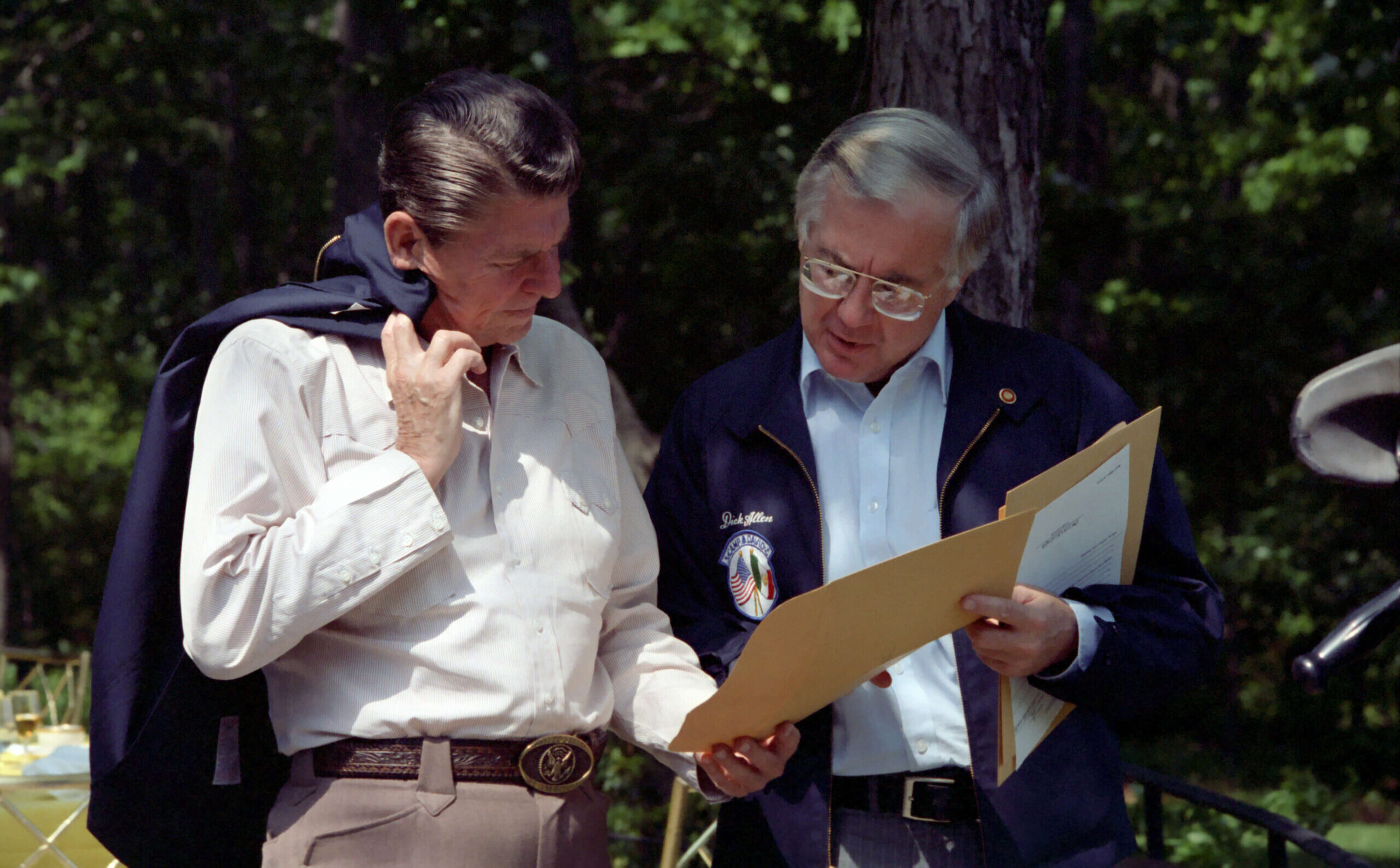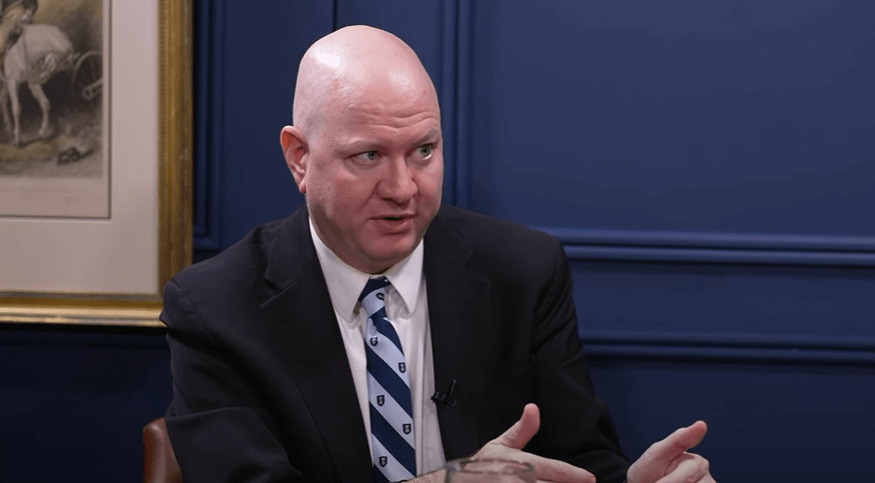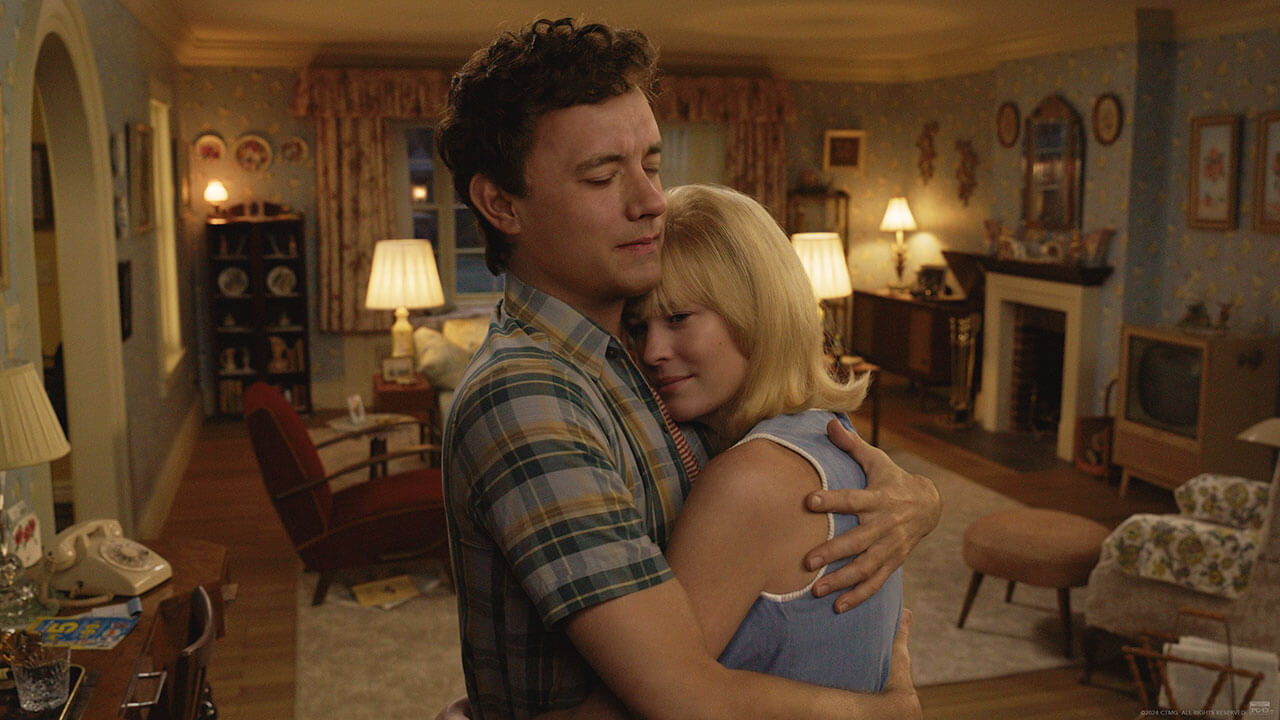An Anxious Age:
The Post-Protestant Ethic and the Spirit of America
By Joseph Bottum
(New York: Image, 2014)
In An Anxious Age, Joseph “Jody” Bottum offers a capacious, unfailingly generous, always lively, and often correct if ultimately insufficient account of the course of American Christianity over the past half century. His book joins other important recent works that attempt to account for a perceptible change in our national character, notably The Twilight of the American Enlightenment by George Marsden (a Protestant version of Jody’s study; see Kenneth Grasso’s review on page 46) and One Nation under God: How Corporate America Invented Christianity by Kevin Kruse (a skeptic’s account).
Bottum’s book focuses on two related developments: the collapse of Mainline Protestantism as a moral force in American public life that took place roughly from the 1960s to the 1980s, and the rapid rise and equally rapid fall of Catholicism as a potential replacement in that role, which Bottum dates from 1987 to 2002. Ours is an “anxious age,” he writes, because any semblance of an American consensus—once formed on a stable tripod consisting of democracy, capitalism, and Protestantism—is now missing one leg, leaving a highly unstable bipod (democracy and capitalism) whose contradictions become increasingly evident.
Arguably, as the legs of the stool have been reduced from three to two legs, our politics have moved from the possibility of achieving relative consensus afforded by a common religious and moral language that balanced the demands of democracy and capitalism to a deep and insurmountable hostility between the two in the absence of any religious connective tissue.
Yet this anxiety, Bottum implicitly concludes, is only really felt by the declining remnant of religious believers, increasingly limited to evangelical and orthodox Catholic circles (with far smaller numbers of non-Christian religious variously situated). The heirs of mainline Protestantism—what Bottum calls post-Protestant “Poster Children”—he rightly describes as animated with a profound confidence born of certainty in their moral rectitude and spiritual-political purity, and an unassailable belief that they are on the right side of History. Controlling most of the levers of social, educational, administrative, and cultural power, these “post-Protestant” elect (who are, notwithstanding Bottum’s protestations, also often the “elite”) are “anxious” only to the extent that they believe a dangerous remnant of irrational, rearguard religious believers are in a position to obstruct the otherwise inevitable trajectory of Progress.
For a time it seemed that the “Poster-Children” had cause to worry. As former editor of First Things and protégé of the late Fr. Richard John Neuhaus, Bottum has solid inside knowledge of the spirited effort in the 1980s and 1990s to forge a new moral consensus that Neuhaus hopefully described as “the Catholic moment.”
Bottum captures some of the remarkable aspects of this moment, particularly the rise of an intellectualized Catholic faith, one that had moved decisively from the uneducated, pious, clericalist, and ethnic Catholicism of the urban ghettos to a highly educated lay movement that was driven especially by the theologically and intellectually rich papacies of John Paul II and Benedict XVI. For a time, a movement consisting of Evangelical foot soldiers steeped in Catholic natural-law thinking seemed to pose a serious counterforce to the progressive narrative, even capturing the White House in a succession of conservative victories from 1980 to 2004 that provoked pervasive anxiety (and even outright panic) among “post-Protestants.”
Particularly alarming was the reversal of what many assumed to be the inevitable liberalization of Catholicism—whose assimilation into a version of Protestantism many hoped would put the final nail in the coffin of any remaining opposition to liberal momentum. The papacies of John Paul II and Benedict XVI were not supposed to happen, and both shook the confidence of, and redoubled the efforts by, progressive liberals to strangle any possible “Catholic moment.” As Bottum tells the tale, what little an intellectualized faith was able to accomplish, the clerical sexual abuse scandal brought to a rapid halt. Even as the “Swallows of Capistrano” (the label Bottum deploys to describe these Catholics) lit out to occupy the landscape, the power and influence of the institutional Church in America had passed its peak.
A decade later few believe there is any prospect for a “Catholic moment,” and many conclude that, in retrospect, what looked like a “moment” was in fact the last gasp of Christian morality in America. With successive presidential victories supported almost entirely by secular-leaning elements of the American polity, the successful painting of Christians as engaged in a “war on women” for refusing to submit to a mandate that conscripts religious institutions into providing contraceptives and abortifacients, and a Supreme Court decision—backed by growing public support—requiring nationwide legalization of homosexual marriage, the anxiety is one-sided at the moment and for the foreseeable future.
Bottum’s book is charmingly written, idiosyncratic in largely fetching ways, and tells a generally accurate yarn, but in two key respects his narrative misfires. First, he insists upon the label “post-Protestant” to describe the now-ascendant “elect” who control the main institutions of cultural formation in American society, while understating how deeply Protestant they remain; and secondly, he inaccurately portrays the presence of a confident (if intellectualized) Catholicism as the deepest inspiration of the momentary countermovement against the “Poster Children,” while missing how Americanized—and hence Protestantized and liberal—that Catholicism was. The mistake is understandable, given Bottum’s own role in advancing this version of the narrative in his role at First Things, but the battle he describes is actually between a wholly liberalized Protestantism and a Protestantized Catholicism. To be even more accurate, he depicts a civil war between two camps of Protestantism, neither of which called themselves Protestant, but which nevertheless reflected two sides of the coin of American liberalism. And because he misses this important aspect of the debate, he doesn’t realize just how badly we are in need of good dose of anxiety.
Bottum recognizes that the source of the post-Protestant secular “elect” lies in the ascent of nineteenth-century liberal Protestantism, and he rightly points to Walter Rauschenbusch as a seminal figure in the rise of a Protestantism that argued that the source of most sins were social and systemic, and hence might be overcome not by divine grace but through politics and social action. Bottum is satisfied to leave it at that, however, without asking how and why Protestantism was so susceptible to this internal development, and hence how deeply and pervasively Protestant today’s “secularism” remains.
American Protestantism was always animated by a belief in national providence and a faith in America’s central role in ushering in God’s kingdom; Rauschenbusch is an extension of this belief in a “redeemer nation,” one that can trace its origins back through Manifest Destiny to Winthrop’s sermon declaring the Massachusetts Bay Colony to be “as a city on a Hill.” Bottum says more than he realizes when he describes the “elect” as “puritanical”: today’s liberal “secularists,” no less than their Puritan counterparts, seek the suppression of (social) sin, now with an aim to establishing the Kingdom of God on earth.
While today’s liberal elect are described as “secular,” their secularity is entirely derived from a relocated Protestantism—a “secularism” that couldn’t be more different, for instance, than the cruel world after God’s death portrayed by Nietzsche. Today’s “post-Protestantism” is simply where Protestantism went when it left the Mainline, but its adherents in that secularized Church continue to seek the realization of the Kingdom of Heaven on earth, and strive to do so through the main social, educational, and political institutions that have been continuously under their control since America’s Founding.
Further, while Bottum is correct that Catholics attempted to occupy the role that had been abandoned by Mainline Protestants, he fails to recognize the extent to which Catholics had evolved into a shadow Protestantism, mimicking main aspects of the Protestantism that had been sloughed off by the “Poster Children.” Catholics had by the 1980s become so acclimated to the ambient liberal and Protestant culture—and indeed, so eager to gain admittance to the mainstream of American life—that the assertion of a “Catholic moment” was almost completely defined as politicized Protestantism sprinkled with holy water. Bottum explains that Evangelical Protestants were largely willing to sign on to the project because institutional Catholicism was sufficiently weak, but the more likely explanation is that even “traditionalist” American Catholics had become sufficiently Protestant to be viewed by erstwhile Evangelical foes as benign.
Bottum points to one significant example for evidence of the influence of Catholic natural-law teaching on political conservatism: the second inaugural address of George W. Bush, which announced America’s quasi-religious mission to extend democracy around the world. Bottum concludes that the speech’s effort to “connect fact and value” was evidence of a natural-law influence—a sign of Catholicism’s arrival as a governing philosophy—entirely missing its connection to the long tradition of American providentialism that has been deeply grounded in its Protestant origins. That Bottum could interpret a perennial Protestant nationalist theme as evidence of the influence of Catholic natural law points to how extensively American Catholics had occupied the space abandoned by the Post-Protestants.
Bottum consistently misses how extensively leading conservative American Catho‑ lics retooled Catholicism to fit the American Protestant narrative. Figures like Michael Novak and George Weigel worked assiduously in those years to persuade fellow Catholics that there was a deep compatibility between Catholicism and the individualistic basis of free-market capitalism, while a plethora of political philosophers, law professors, and historians—ranging from Robert George to Sam Gregg, author of Tea Party Catholics—argued that the American Founding was grounded in anthropological and philosophical principles that were in essence indistinguishable from Catholic social teaching. Two of the greatest achievements arising from
the Protestant Reformation—capitalism and political liberalism—were suddenly baptized and advanced as the very basis of “the Catholic moment.”
And of course, conservative American Catholics were instructed that Catholic “just war” theory permitted enthusiastic support for American militarism, even if that meant breaking with Pope John Paul II and Pope Benedict XVI, who opposed in succession the first and second wars in Iraq. Bottum never once mentions the catastrophic post-9/11 invasion of Iraq as the reason for the eclipse of conservative Catholic influence in American politics or the reason for the rapid ascent of a highly secular and increasingly hostile president and administration. So blinded is he by the idea that George W. Bush was mouthing Catholic natural-law principles in his call to make the world safe for democracy that he fails to notice how fundamentally Protestant First Things’ version of American Catholicism had become.
Bottum laments that Protestantism no longer provides the third voice of America’s other two pillars of (liberal) democracy and capitalism, but there is ample evidence that the two are what is left once Protestantism is distilled into its ultimate political and economic forms. To the extent that the political left has taken up the banner of egalitarian democracy and the right defends capitalism, it is arguable that we have reached the culmination of Protestantism’s trajectory—statist collectivism versus libertarian individualism, both being two sides of the same liberal coin. An actual “Catholic moment” would challenge these false antinomies and, by definition, would require a fundamental rethinking of the deepest assumptions of the American regime. This idea, of course, is a deep source of anxiety, suggesting that we still have a way to go before we can truly enter an anxious age. ♦
Patrick J. Deneen is David A. Potenziani Memorial Associate Professor of Constitutional Studies at the University of Notre Dame.














